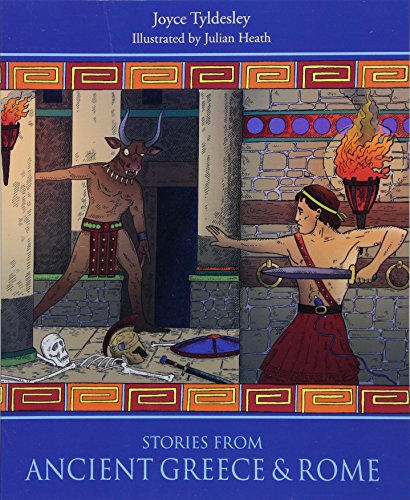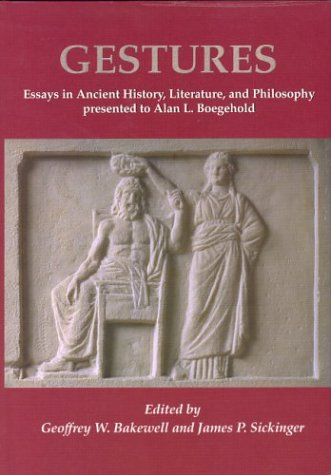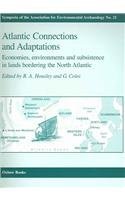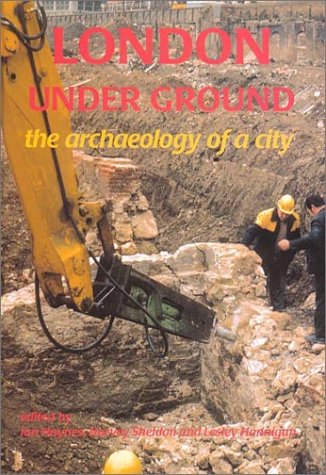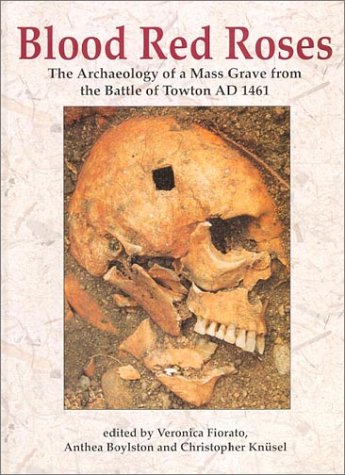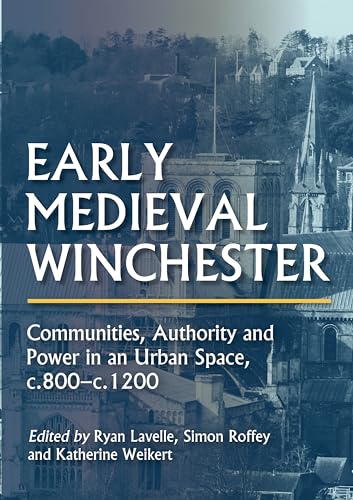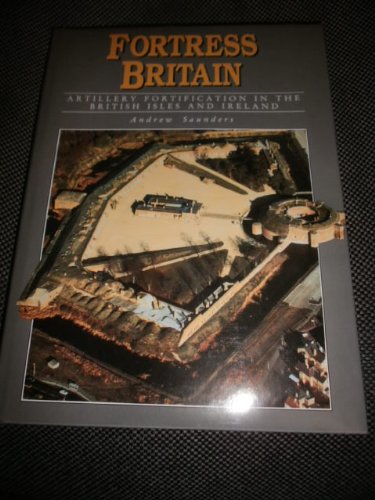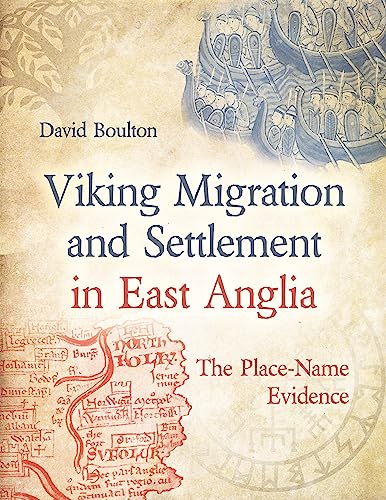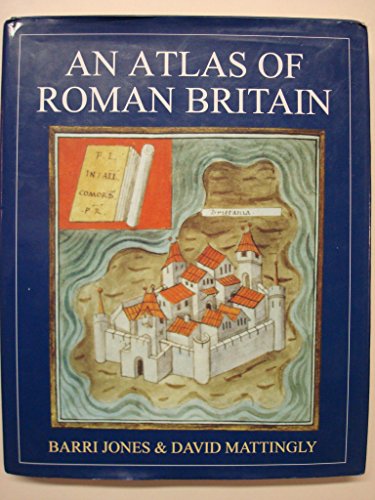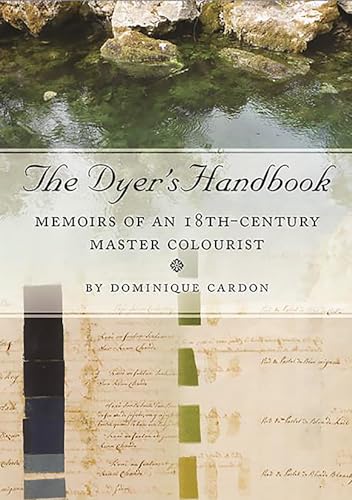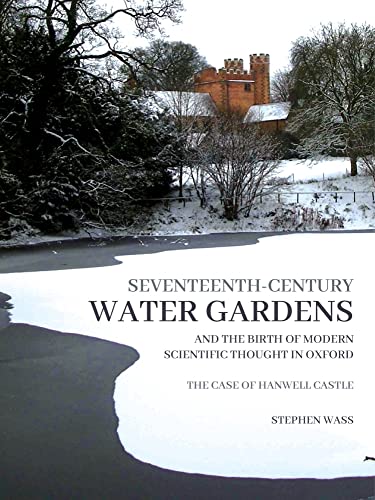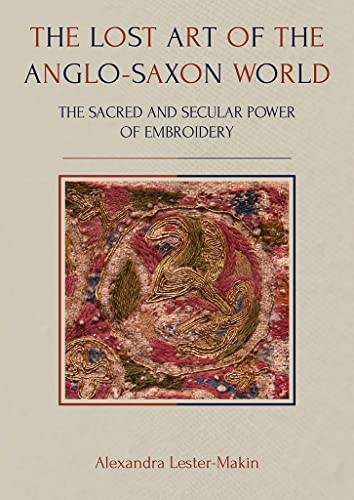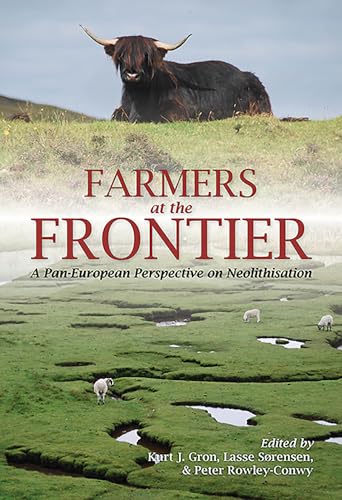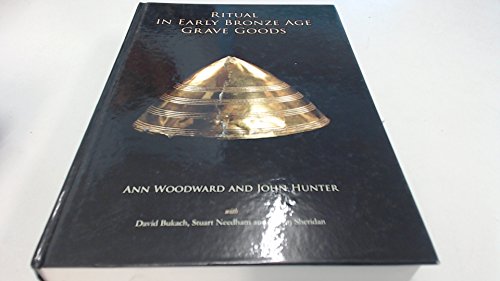oxbow books united kingdom oxford (19 Ergebnisse)
Produktart
- Alle Produktarten
- Bücher (19)
- Magazine & Zeitschriften
- Comics
- Noten
- Kunst, Grafik & Poster
- Fotografien
- Karten
-
Manuskripte &
Papierantiquitäten
Zustand
- Alle
- Neu
- Antiquarisch/Gebraucht
Einband
- alle Einbände
- Hardcover
- Softcover
Weitere Eigenschaften
- Erstausgabe
- Signiert
- Schutzumschlag
- Angebotsfoto
Land des Verkäufers
Verkäuferbewertung
-
Stories from Ancient Greece and Rome
Verlag: Oxbow Books, United Kingdom, Oxford, 2017
ISBN 10: 1785707655ISBN 13: 9781785707650
Anbieter: WorldofBooks, Goring-By-Sea, WS, Vereinigtes Königreich
Buch
Paperback. Zustand: Very Good. Heath, Julian (illustrator). In a companion book to the best-selling Stories from Ancient Egypt, Joyce Tyldesley re-tells some of the most interesting and entertaining myths and legends from the Classical world. These stories tell us how the spider spun the first web, how a simple ball of string defeated the fearsome minotaur, and how Romulus founded the mighty city of Rome. The this book belongs to introduction teaches the reader how to write their name using ancient Greek letters, and their age using Roman numerals. Each of the stories includes a question and answer section for enthusiastic young archaeologists. The book is illustrated with imaginative and amusing line-drawings by acclaimed artist and archaeologist Julian Heath. Stories from Ancient Greece and Rome is primarily aimed at children between the ages of 7-11, but it offers an entertaining and informative introduction to the myths of ancient Greece and Rome to readers of all ages. The book has been read, but is in excellent condition. Pages are intact and not marred by notes or highlighting. The spine remains undamaged.
-
Gestures: Essays in Ancient History, Literature, and Philosophy presented to Alan L Boegehold
Verlag: Oxbow Books, United Kingdom, Oxford, 2003
ISBN 10: 1842170864ISBN 13: 9781842170861
Anbieter: WorldofBooks, Goring-By-Sea, WS, Vereinigtes Königreich
Buch
Paperback. Zustand: Very Good. These thirty essays were presented to Alan L Boegehold, a distinguished philologist and an inspirational teacher, on the occasion of his retirement and his seventy-fifth birthday. The contributions fall into two categories, each one reflecting Boegehold's diverse interests in classical studies: the first section includes essays on literary and philosophical topics, several of which pick up on the theme of gestures; the second section is representative of Boegehold's more specialised research in Greek epigraphy, history and law. Contents: Biography of Alan L Boeghold; A divine audience for the celebration of Asopichus' victory in Pindar's Fourteenth Olympian Ode (L Athanassaki) ; Poi de kai pothen ; self-motion in Plato's Phaedrus (G W Bakewell) ; Drinking from the sources: John Barton's Tantalus and the epic cycle (D Boedeker) ; Mania and melancholy: Some Stoic texts on insanity (M Graver) ; A gesture in Archilochos 118 (West)? (C Hahnemann) ; When an identity was expected: The slaves in Aristophanes' Knights (J Henderson) ; Nemesis and Phthonos (D Konstan) ; A reading of Ausonius, Professores I (J Pucci) ; Horace epi. 1.13: Compliments to Augustus (M C J Putnam) ; When a gesture was misinterpreted: didonai titthion in Menander's Samia (A C Scafuro) ; Optical illusions in ancient Greece (P Tribodeau) ; Gesture (W F Wyatt, Jr) ; Some observations on the Appianos sarcophagus ( IGUR 1700) (G Bucher) ; The first tragic contest: Revision revised (A P Burnett) ; Notes for a philologist (J McK Camp) ; Two passages in Thucydides (M Chambers) ; Livy's narrative habit (J D Chaplin) ; Athenian prostitution as a liberal profession (E E Cohen) ; Sanides and Sanidia (John E Fischer) ; Thuc. 2.13.3: 600 T. of tribute (C W Fornara) ; Delivering the go(o)ds: Demetrius Poliorcetes and Hellenistic divine kingship (P Green) ; Lysias 14 and 15. A note on the grafes astrateias (M H Hansen) ; Counterproposal at Carthage (Aristotle, Politics II.11.5-6) (G L Huxley) ; Kallias A ( IG I3 52A) and Thucydides 2.13.3 (J Kennelly) ; Slander in ancient Athens: A common law perspective (W T Loomis) ; The bones of Orestes (D D Philips) ; The ostracism of Damon (K A Raaflaub) ; The date of Pnyx III: SEG XII 87, the law of Eukrates on tyranny (337/6 BC) (M B Richardson) ; Archon dates, atthidographers and the sources of Ath. Pol. 22-26 (J P Sickinger) ; A major Athenian letter-cutter ca. 410 to ca. 380: The cutter of IG II2 17 (S V Tracy) . The book has been read, but is in excellent condition. Pages are intact and not marred by notes or highlighting. The spine remains undamaged.
-
Atlantic Connections and Adaptations: Economies, environments and subsistence in lands bordering the North Atlantic: 21 (Symposia of the Association for Environmental Archaeology)
Verlag: Oxbow Books, United Kingdom, Oxford, 2004
ISBN 10: 1842171062ISBN 13: 9781842171066
Anbieter: WorldofBooks, Goring-By-Sea, WS, Vereinigtes Königreich
Buch
Paperback. Zustand: Very Good. Maritime communications have played a vital role in shaping both human cultures and the biogeography of the North Atlantic Realm, a region containing discrete groups of islands separated by deep water. The aim of this volume is to explore the diversity of human environments and cultural adaptations present within the eastern part of the North Atlantic Realm, from Scotland and Norway in the East to Iceland in the West. The papers explore a number of key themes, including: the origins of flora and fauna of the North Atlantic Realm and the introduction of non-indigenous species in post-glacial periods; the various stages of human colonisation, from the explorations of Mesolithic hunter-gatherers in the Hebridean islands to the Norse settlement of the Faroes, Iceland and Greenland during the 8th to 10th centuries AD, and how each stage of colonisation has had its own ecological characteristics and consequences for indigenous flora and fauna; the influence of climatic variability and extreme episodic events on local environments and human settlement patterns; and the establishment and development of human exchange and trade networks and how they have affected the range of resources available for human exploitation, from agricultural domesticates to the development of the Flemish sea fishery. These papers were presented at the first joint meeting of the Association for Environmental Archaeology (AEA) and the North Atlantic Bio-cultural Organisation (NABO), which was held at Glasgow University in March 2001. The book has been read, but is in excellent condition. Pages are intact and not marred by notes or highlighting. The spine remains undamaged.
-
London Under Ground: The Archaeology of a City
Verlag: Oxbow Books, United Kingdom, Oxford, 2012
ISBN 10: 1842170309ISBN 13: 9781842170304
Anbieter: WorldofBooks, Goring-By-Sea, WS, Vereinigtes Königreich
Buch
Paperback. Zustand: Very Good. The book has been read, but is in excellent condition. Pages are intact and not marred by notes or highlighting. The spine remains undamaged.
-
Blood Red Roses: The Archaeology of a Mass Grave from the Battle of Towton, AD 1461
Verlag: Oxbow Books, United Kingdom, Oxford, 2000
ISBN 10: 1842170252ISBN 13: 9781842170250
Anbieter: WorldofBooks, Goring-By-Sea, WS, Vereinigtes Königreich
Buch
Paperback. Zustand: Very Good. In 1996 a mass grave believed to be from the Battle of Towton was discovered by chance. This provided the opportunity for the first archaeological excavation of a mass grave from an English battlefield and was the catalyst for a multi-disciplinary research project, beginning with the excavation of the grave, and then a study of the skeletal remains, the battlefield landscape, the historical evidence and contemporary arms and armour. The discoveries were dramatic and moving; the individuals had clearly suffered traumatic deaths and subsequent research highlighted the often multiple wounds each individual had received before and, in some cases after they had died. The exciting forensic work was documented in the Channel 4 programme Secrets of the Dead. An important and controversial question that emerged was whether the soldiers had been killed in battle, or executed as prisoners in its aftermath. This volume publishes the excavation reports and subsequent research, revealing much information about how and in what circumstances the men died and the fighting techniques, weapons and armour employed. Also discussed are the wider implications of the discovery, both in terms of increasing our understanding of what happened at Towton, and what it contributes to our knowledge of Medieval warfare. The book has been read, but is in excellent condition. Pages are intact and not marred by notes or highlighting. The spine remains undamaged.
Mehr Angebote von anderen Verkäufern bei ZVAB
Gebraucht ab EUR 31,50
-
Roman Military Equipment from the Punic Wars to the Fall of Rome, second edition
Verlag: Oxbow Books, United Kingdom, Oxford, 2006
ISBN 10: 1842171593ISBN 13: 9781842171592
Anbieter: WorldofBooks, Goring-By-Sea, WS, Vereinigtes Königreich
Buch
Paperback. Zustand: Very Good. Rome's rise to empire is often said to have owed much to the efficiency and military skill of her armies and their technological superiority over barbarian enemies. But just how 'advanced' was Roman military equipment? What were its origins and how did it evolve? The authors of this book have gathered a wealth of evidence from all over the Roman Empire - excavated examples as well as pictorial and documentary sources - to present a picture of what range of equipment would be available at any given time, what it would look like and how it would function. They examine how certain pieces were adopted from Rome's enemies and adapted to particular conditions of warfare prevailing in different parts of the Empire. They also investigate in detail the technology of military equipment and the means by which it was produced, and discuss wider questions such as the status of the soldier in Roman society. Both the specially prepared illustrations and the text have been completely revised for the second edition of this detailed and authoritative handbook, bringing it up to date with the very latest research. It illustrates each element in the equipment of the Roman soldier, from his helmet to his boots, his insignia, his tools and his weapons. This book will appeal to archaeologists, ancient and military historians as well as the generally informed and inquisitive reader. The book has been read, but is in excellent condition. Pages are intact and not marred by notes or highlighting. The spine remains undamaged.
-
Early Medieval Winchester: Communities, Authority and Power in an Urban Space, c.800-c.1200
Verlag: Oxbow Books, United Kingdom, Oxford, 2021
ISBN 10: 1789256232ISBN 13: 9781789256239
Anbieter: WorldofBooks, Goring-By-Sea, WS, Vereinigtes Königreich
Buch
Paperback. Zustand: Very Good. Winchesters identity as a royal centre became well established between the ninth and twelfth centuries, closely tied to the significance of the religious communities who lived within and without the city walls. The reach of power of Winchester was felt throughout England and into the Continent through the relationships of the bishops, the power fluctuations of the Norman period, the pursuit of arts and history writing, the reach of the citys saints, and more. The essays contained in this volume present early medieval Winchester not as a city alone, but a city emmeshed in wider political, social, and cultural movements and, in many cases, providing examples of authority and power that are representative of early medieval England as a whole. The book has been read, but is in excellent condition. Pages are intact and not marred by notes or highlighting. The spine remains undamaged.
-
Fortress Britain: Artillery Fortifications in the British Isles and Ireland
Verlag: Oxbow Books, United Kingdom, Oxford, 1995
ISBN 10: 0946897794ISBN 13: 9780946897797
Anbieter: WorldofBooks, Goring-By-Sea, WS, Vereinigtes Königreich
Buch
Paperback. Zustand: Very Good. The book has been read, but is in excellent condition. Pages are intact and not marred by notes or highlighting. The spine remains undamaged.
-
Viking Migration and Settlement in East Anglia: The Place-Name Evidence
Verlag: Oxbow Books, United Kingdom, Oxford, 2023
ISBN 10: 1914427254ISBN 13: 9781914427251
Anbieter: WorldofBooks, Goring-By-Sea, WS, Vereinigtes Königreich
Buch
Paperback. Zustand: Fine. This book shows how analysis of Scandinavian-influenced place-names in their landscape contexts can provide crucial new evidence of differing processes of Viking migration and settlement in East Anglia between the late ninth and eleventh centuries. The place-names of East Anglia have until now received little attention in the academic study of Viking settlement. Similarly, the question of a possible migration of settlers from Scandinavia during the Viking period was for many years dismissed by historians and archaeologists until the recent discovery by metal-detectorists of abundant Scandinavian metalwork and jewellery in many parts of East Anglia. David Boulton has synthesised these two previously neglected elements to offer new insights into the processes of Viking settlement. This book provides the first comprehensive analysis of Scandinavian-influenced place-names in East Anglia. It examines their different categories linguistically and explores the landscape and archaeological contexts of the settlements associated with them, with the aid of GIS-generated maps. Dr Boulton shows how the process of Viking settlement was influenced by changes in rural society and agriculture which were then already occurring in East Anglia, such as the late Anglo-Saxon expansion of arable farming and the associated recolonisation of the inland clay plateau. These developments resulted in patterns of place-name formation which differ significantly from some of the previously accepted, orthodox interpretations of how Scandinavian-influenced place-names (especially those containing the by and thorp elements, and the Grimston-hybrids) came into being in the Danelaw. In view of these discrepancies, David Boulton proposes an innovative, hypothetical model for the formation of the Scandinavian-influenced place-names in East Anglia, which explores differing patterns and phases of Viking settlement in the region and the possible pathways of migration that preceded them.
-
An Atlas of Roman Britain
Verlag: Oxbow Books, United Kingdom, Oxford, 2007
ISBN 10: 1842170678ISBN 13: 9781842170670
Anbieter: WorldofBooks, Goring-By-Sea, WS, Vereinigtes Königreich
Buch
Paperback. Zustand: Very Good. First published in 1990, this is a comprehensive atlas containing over 270 detailed and wide-ranging maps, figures, plans and site photographs on all aspects of Roman Britain. The maps cover political and military history as well as the physical geography of Britain and the view Roman geographers had of it. Evidence for economic activity, including mining and pottery production, studies of life in town and country, and of religion, is given in the maps. Major monuments, such as Hadrian's Wall, feature on the larger scale maps and plans. The book has been read, but is in excellent condition. Pages are intact and not marred by notes or highlighting. The spine remains undamaged.
-
The Dyer's Handbook: Memoirs of an 18th-Century Master Colourist: 26 (Ancient Textiles Series)
Verlag: Oxbow Books, United Kingdom, Oxford, 2020
ISBN 10: 178925549XISBN 13: 9781789255492
Anbieter: WorldofBooks, Goring-By-Sea, WS, Vereinigtes Königreich
Buch
Paperback. Zustand: Very Good. Persian blue, pomegranate flower, spiny lobster, wine soup, pale flesh, dove breast, golden wax, grass green, green sand, rotten olive, modest plum, agate, rich French gray, gunpowder of the English.these are just some of the colour names of old fabric to fire the imagination. The Dyer's Handbook concerns a unique manuscript from the eighteenth century; a dyers memoirs from Languedoc, containing recipes for dyes with corresponding colour samples. It is an exceptional document, hugely rare and of great significance not only to textile historians but dyers and colourists today, as thanks to the information in the manuscript the colours can be reproduced exactly, with the same ingredients, or reproduced using modern techniques by matching the colour samples. To the English translation of the text, together with facsimile pages reproduced in colour from the original manuscript, are added essays meant to situate it in its historical, economic and technological contexts. For those historians who have long been fascinated by the change in scale and the amount of innovation that occurred in woollen cloth production in Europe during the 17th and 18th centuries, The Dyer's Handbook brings first-hand insight into the daily preoccupations and tasks of a key actor in the success story of the Languedocian broadcloth production specially devised for export to the Levant. Even non-specialists may be interested in understanding the clever management and technical organisation that made it possible for the author to produce, dye, finish, pack and export up to 1,375 pieces of superfine broadcloth per year, representing nearly 51 km of cloth. The book has been read, but is in excellent condition. Pages are intact and not marred by notes or highlighting. The spine remains undamaged.
-
Seventeenth-century Water Gardens and the Birth of Modern Scientific thought in Oxford: The Case of Hanwell Castle
Verlag: Oxbow Books, United Kingdom, Oxford, 2022
ISBN 10: 1914427165ISBN 13: 9781914427169
Anbieter: WorldofBooks, Goring-By-Sea, WS, Vereinigtes Königreich
Buch
Paperback. Zustand: Very Good. Based on a decade of archaeological investigation and historical research, this book tells the story of the Copes of Hanwell Castle in north Oxfordshire and the creation of a garden with links to the development of scientific thinking in Oxford in the late seventeenth century. New research using Robert Plots Natural History of Oxfordshire as a starting point has uncovered details of a remarkable family and their rise and tragic downfall, their social circle, that included some great names in the development of early scientific thinking, and their garden that in effect became a place dedicated to the wonders of technology. The complex tale weaves together the activities of a royalist agent, Richard Allestree, a prodigious musician, Thomas Baltzar, John Claridge, a Hanwell Shepherd with a penchant for weather forecasting, and Sir Anthony Cope who in an atmosphere of secrecy and distrust began to gather together a community that eventually was named by Plot as The New Atlantis, a reference to a book published earlier in the century by Sir Francis Bacon in which he suggests a model for a Utopian science-focused society. The book also chronicles the programme of archaeological excavation that has uncovered several unusual garden features and, most significantly of all, describes in detail the unique collection of seventeenth-century terracotta garden urns, an assemblage that is unparalleled in post-medieval archaeology. This collection was destroyed in a single episode of vandalism around 1675 and has been preserved in deeply buried deposits of mud and silt. Their analysis and reconstruction is opening new insights into the decorative schemes of seventeenth-century gardens. There is coverage of other gardens of the period and their surviving features as well as an examination of early science and how gardens impacted on its development in many ways. The book has been read, but is in excellent condition. Pages are intact and not marred by notes or highlighting. The spine remains undamaged.
-
Monumental Times: Pasts, Presents, and Futures in the Prehistoric Construction Projects of Northern and Western Europe
Verlag: Oxbow Books, United Kingdom, Oxford, 2023
Anbieter: WorldofBooks, Goring-By-Sea, WS, Vereinigtes Königreich
Paperback. Zustand: Fine. This book is concerned with the origins, uses and subsequent histories of monuments. It emphasises the time scales illustrated by these structures, and their implications for archaeological research. It is concerned with the archaeology of Western and Northern Europe, with an emphasis on structures in Britain and Ireland, and the period between the Mesolithic and the Viking Age. It begins with two famous groups of monuments and introduces the problem of multiple time scales. It also considers how they influence the display of those sites today - they belong to both the present and the past. Monuments played a role from the moment they were created, but approaches to their archaeology led in opposite directions. They might have been directed to a future that their builders could not control. These structures could be adapted, destroyed, or left to decay once their significance was lost. Another perspective was to claim them as relics of a forgotten past. In that case they had to be reinterpreted. The first part of this book considers the rarity of monumental structures among hunter-gatherers, and the choice of building materials for Neolithic houses and tombs. It emphasises the difference between structures whose erection ended the use of significant places, and those whose histories could extend into the future. It also discusses 'megalithic astronomy' and ancient notions of time. Part Two is concerned with the reuse of ancient monuments and asks whether they really were expressions of social memory. Did links with an 'ancestral past' have much factual basis? It contrasts developments during the Beaker phase with those of the early medieval period. The development of monumental architecture is compared with the composition of oral literature.
-
The Lost Art of the Anglo-Saxon World: The Sacred and Secular Power of Embroidery: 35 (Ancient Textiles Series)
Verlag: Oxbow Books, United Kingdom, Oxford, 2019
ISBN 10: 1789251443ISBN 13: 9781789251449
Anbieter: WorldofBooks, Goring-By-Sea, WS, Vereinigtes Königreich
Buch
Paperback. Zustand: Very Good. This latest title in the highly successful Ancient Textiles series is the first substantial monograph-length historiography of early medieval embroideries and their context within the British Isles. The book brings together and analyses for the first time all 43 embroideries believed to have been made in the British Isles and Ireland in the early medieval period. New research carried out on those embroideries that are accessible today, involving the collection of technical data, stitch analysis, observations of condition and wear-marks and microscopic photography supplements a survey of existing published and archival sources. The research has been used to write, for the first time, the story of embroidery, including what we can learn of its producers, their techniques, and the material functions and metaphorical meanings of embroidery within early medieval Anglo-Saxon society. The author presents embroideries as evidence for the evolution of embroidery production in Anglo-Saxon society, from a community-based activity based on the extended family, to organised workshops in urban settings employing standardised skill levels and as evidence of changing material use: from small amounts of fibres produced locally for specific projects to large batches brought in from a distance and stored until needed. She demonstrate that embroideries were not simply used decoratively but to incorporate and enact different meanings within different parts of society: for example, the newly arrived Germanic settlers of the fifth century used embroidery to maintain links with their homelands and to create tribal ties and obligations. As such, the results inform discussion of embroidery contexts, use and deposition, and the significance of this form of material culture within society as well as an evaluation of the status of embroiderers within early medieval society. The results contribute significantly to our understanding of production systems in Anglo-Saxon England and Ireland. The book has been read, but is in excellent condition. Pages are intact and not marred by notes or highlighting. The spine remains undamaged.
-
Roman Urbanism in Italy: Recent Discoveries and New Directions: 5 (University of Cambridge Museum of Classical Archaeology Monograph)
Verlag: Oxbow Books, United Kingdom, Oxford, 2023
Anbieter: WorldofBooks, Goring-By-Sea, WS, Vereinigtes Königreich
Paperback. Zustand: Fine. The study of Roman urbanism - especially its early (Republican) phases - is extensively rooted in the evidence provided by a series of key sites, several of them located in Italy. Some of these Italian towns (e.g. Fregellae, Alba Fucens, Cosa) have received a great deal of scholarly attention in the past and they are routinely referenced as textbook examples, framing much of our understanding of the broad phenomenon of Roman urbanism. However, discussions of these sites tend to fall back on well-established interpretations, with relatively little or no awareness of more recent developments. This is remarkable, since our understanding of these sites has since evolved thanks to new archaeological fieldwork, often characterised by the pursuit of new questions and the application of new approaches. Similarly, new evidence from other sites has since prompted a reconsideration of time-honoured views about the nature, role and long-term trajectory of Roman towns in Italy. Tracing its origins in the Laurence Seminar on Roman Urbanism in Italy: recent discoveries and new directions, which took place at the Faculty of Classics of the University of Cambridge (27-28 May 2022), this volume brings together scholars whose recent work at key sites is contributing to expand, change or challenge our current knowledge and understanding of Roman urbanism in Italy. The individual chapters showcase some of the most recent methods and approaches applied to the study of Roman towns, discussing the broader implications of fresh archaeological discoveries from both well known and less widely known sites, from the Po Plain to Southern Italy, from the Republican to the Late Antique period (and beyond).
-
Farmers at the Frontier: A Pan European Perspective on Neolithisation
Verlag: Oxbow Books, United Kingdom, Oxford, 2020
ISBN 10: 1789251400ISBN 13: 9781789251401
Anbieter: WorldofBooks, Goring-By-Sea, WS, Vereinigtes Königreich
Buch
Paperback. Zustand: Very Good. All farming in prehistoric Europe ultimately came from elsewhere in one way or another, unlike the growing numbers of primary centers of domestication and agricultural origins worldwide. This fact affects every aspect of our understanding of the start of farming on the continent because it means that ultimately, domesticated plants and animals came from somewhere else, and from someone else. In an area as vast as Europe, the process by which food production becomes the predominant subsistence strategy is of course highly variable, but in a sense the outcome is the same, and has the potential for addressing more large-scale questions regarding agricultural origins. Therefore, a detailed understanding of all aspects of farming in its absolute earliest form in various regions of Europe can potentially provide a new perspective on the mechanisms by which this monumental change comes to human societies and regions. In this volume, we aim to collect various perspectives regarding the earliest farming from across Europe. Methodological approaches, archaeological cultures, and geographic locations in Europe are variable, but all papers engage with the simple question: What was the earliest farming like? This volume opens a conversation about agriculture just after the transition in order to address the role incoming people, technologies, and adaptations have in secondary adoptions. The book starts with an introduction by the editors which will serve to contextualize the theme of the volume. The broad arguments concerning the process of neolithisation are addressed, and the rationale for the volume discussed. Contributions are ordered geographically and chronologically, given the progression of the Neolithic across Europe. The editors conclude the volume with a short commentary paper regarding the theme of the volume. The book has been read, but is in excellent condition. Pages are intact and not marred by notes or highlighting. The spine remains undamaged.
-
Revisiting Grooved Ware: Understanding Ceramic Trajectories in Britain and Ireland, 3200-2400 Cal BC (Neolithic Studies Group Seminar Papers)
Verlag: Oxbow Books, United Kingdom, Oxford
Anbieter: WorldofBooks, Goring-By-Sea, WS, Vereinigtes Königreich
Paperback. Zustand: Fine. Following its appearance, arguably in Orkney in the 32nd century cal BC, Grooved Ware soon became widespread across Britain and Ireland, seemingly replacing earlier pottery styles and being deposited in contexts as varied as simple pits, passage tombs, ceremonial timber circles and henge monuments. As a result, Grooved Ware lies at the heart of many ongoing debates concerning social and economic developments at the end of the 4th and during the first half of the 3rd millennia cal BC. Stemming from the 2022 Neolithic Studies Group autumn conference, and following on from Cleal and MacSween's 1999 NSG volume on Grooved Ware, this book presents a series of papers from researchers specializing in Grooved Ware pottery and the British and Irish Neolithic, offering both regional and thematic perspectives on this important ceramic tradition. Chapters cover the development of Grooved Ware in Orkney as well as the timing and nature of its appearance, development, and subsequent demise in different regions of Britain and Ireland. In addition, thematic papers consider what Grooved Ware can contribute to understandings of inter-regional interactions during the earlier 3rd millennium cal BC, the possible meaning of Grooved Ware's decorative motifs, and the thorny issue of the validity and significance of the various Grooved Ware sub-styles. The book will be of great value not only to archaeologists and students with a specific interest in Grooved Ware pottery but also to those with a more general interest in the development of the Neolithic of Britain and Ireland.
-
Ritual in Early Bronze Age Grave Goods: An examination of ritual and dress equipment from Chalcolithic and Early Bronze Age graves in England
Verlag: Oxbow Books, United Kingdom, Oxford, 2015
ISBN 10: 1782976949ISBN 13: 9781782976943
Anbieter: WorldofBooks, Goring-By-Sea, WS, Vereinigtes Königreich
Buch
Paperback. Zustand: Very Good. The exotic and impressive grave goods from burials of the Wessex Culture in Early Bronze Age Britain are well known and have inspired influential social and economic hypotheses, invoking the former existence of chiefs, warriors and merchants and high-ranking pastoralists. Alternative theories have sought to explain how display of such objects was related to religious and ritual activity rather than to economic status, and that groups of artefacts found in certain graves may have belonged to religious specialists. This volume is the result of a major research project that aimed to investigate Chalcolithic and Early Bronze Age grave goods in relation to their possible use as special dress accessories or as equipment employed within ritual activities and ceremonies. Many items of adornment can be shown to have formed elements of elaborate costumes, probably worn by individuals, both male and female, who held important ritual roles within society. Furthermore, the analysis has shown that various categories of object long interpreted as mundane types of tool were in fact items of bodily adornment or implements used in ritual contexts, or in the special embellishment of the human body. Although never intended to form a complete catalogue of all the relevant artefacts from England the volume provides an extensive, and intensively illustrated, overview of a large proportion of the grave goods from English burial sites. The book has been read, but is in excellent condition. Pages are intact and not marred by notes or highlighting. The spine remains undamaged.


